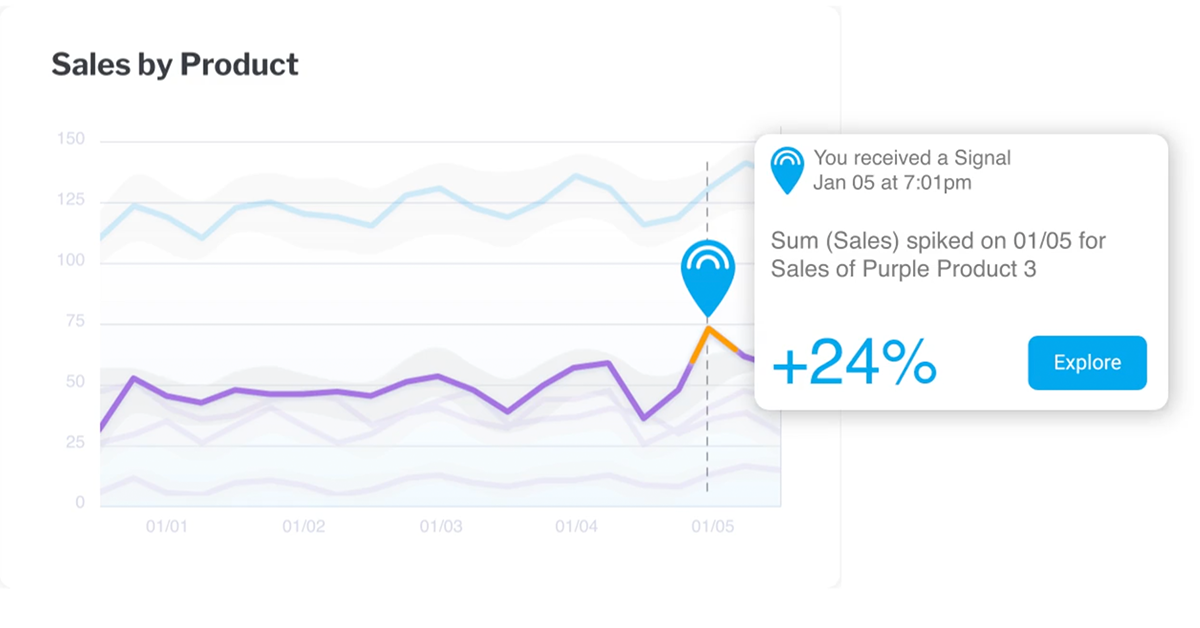
How businesses use automated monitoring
One of the big trends we’ve seen this year is organizations going direct to consumer. Manufacturers who sold through retail outlets are moving online, and as a result a huge amount of digital transformation is occurring. A customer of ours has done exactly that. Kyowa is a Japanese cosmetics and health food company and they’ve moved from retail to online and digital, and Yellowfin has been a significant part of that journey.
In particular, they’ve used Signals. Signals enables you to monitor metrics for things with high dimensionality. Companies can use it to monitor and understand sales trends for products in an ecommerce site or in an IoT setting to monitor lots of sensors.
What are Signals?
Signals allows you to discover changes in trends or outlier behaviors in your dimensions really quickly and without relying on human beings to manually slice and dice that data. Essentially, once you turn it on you don't need to do anymore and it works perfectly without any of the human failings of boredom or error. For ecommerce sites, if you update your website or make changes to products there could be human error in that process that prevents a product from being sold, for example. Signals will alert you to that quickly if customers suddenly stop buying a product. Historically, that process took a long time for people to discover.
How were Signals used?
Kyowa has thousands of products so Signals let’s them look for changes, trends and anomalies in inventory patterns for every product they have. This is particularly important for them because they have a 30 to 90 day lead time for replenishing inventory. For any retailer, not having stock on hand is a fairly significant opportunity cost because retail is all about speed and velocity.
Kyowa could’ve used threshold-based alerts - where you set rules so when inventory falls below a certain threshold you’re alerted. But they have thousands of different products so threshold alerts don’t make sense, particularly if you need differentiated thresholds based on product type.
Signals, on the other hand, tells you when something changes. So if your inventory level normally goes through a cycle, Signals looks for a sudden change in that pattern and tells you as soon as it happens. If there's any change of behavior in terms of purchasing parameters then you can manage your inventory in real time.
The results
As a result of using Signals to monitor its stock levels this year, Kyowa’s opportunity loss for stock is at $0. That’s an amazing change for the organization.
They’re now looking at how they can expand their use of Signals to monitor purchasing behaviors for loyal customers and other revenue generating activities. This could help them with product creation going forward. With more real time insights they can react faster to changes in their business and that’s a great step forward in their digital transformation.

Customer Success Story: Kyowa
Using Yellowfin Signals to automate inventory management and reduce opportunity loss to almost zero